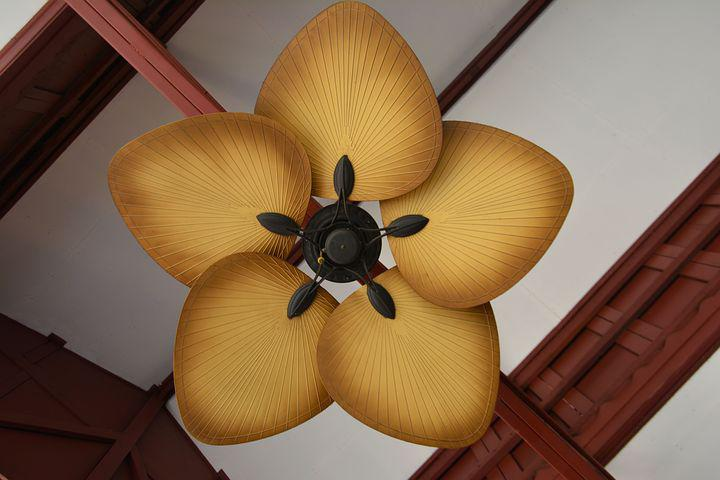Ceiling fans are great for making your home feel more comfortable, without spending a lot of money on climate control or leaving a whopping big carbon footprint in your wake. They’re not hard to hook up, either, especially if you’re even a little bit handy.
The hardest part of hanging your own ceiling fan is probably preparing a fan brace in your ceiling to hang the fan safely. Your new fan should come with assembly instructions, so it shouldn’t be too hard to figure out how to assemble the motor assembly, downrod, and canopy, then add the light fixture and blades. Hooking up a new ceiling fan does require some light wiring work, but it’s nothing most home handypersons can’t tackle. Follow these steps to get the job done right.
Turn Off the Electrical Circuit
Putting in a ceiling fan is an electrical wiring job, so you need to cut off power to the circuit you’ll be working on at the breaker box. It is very important that you do this before you start the work. Test the circuit after you’ve shut it off to make sure it’s really off.
Remove the Existing Fixture
To remove a light fixture, remove the glass shade or globe to expose the screws holding it to the ceiling. Take them out and then pull the light fixture down, until you can see the wiring connections. Remove the wire nuts and unwind the wiring to separate the connections.
If the old fixture you’re taking down is another ceiling fan, you might need help getting it down safely from the ceiling – ceiling fans can weigh 50 lbs or more. It might be easier to remove the blades first and then remove the fan motor by finding the screws that hold the canopy in place. Sometimes the screws are hidden – for example, if it’s a flush-mount fan, you might have to take out the light fixture to find them. Once you have pulled down the canopy, disconnect the wiring and remove the fan mounting bracket from the ceiling.
Install a Fan Brace (If You Need One)
If you’re replacing an existing fan, you probably already have an appropriate fan brace in your ceiling, but you should still check to make sure. You can anchor a ceiling fan directly to a joist, if one happens to run directly above the hole in your ceiling. If the joist isn’t too far away from your ceiling hole, you could cut a new hole under the joist, pull the wiring over, and use a ceiling medallion to hide the original hole.
If you can’t attach your fan directly to the joist, you need to use a fan brace. You can install one from above by anchoring a length of two-by-four lumber between the joists above the ceiling hole, using 1.5-inch screws. You can install an expanding metal fan brace from below, just by inserting it through the hole and opening it until it can anchor itself into the joists on either side. 
Update the Junction Box in Your Ceiling (If Necessary)
Again, if you already had a farmhouse ceiling fan, you may already have the appropriate junction box. You need a pancake-style electrical box rated for use with ceiling fans. Anchor it to your fan brace or ceiling joist.
Secure the Mounting Bracket
Use the instructions that came with your fan to securely fasten the fan’s mounting bracket to the pancake electrical box.
Affix the Downrod and Canopy to the Motor Housing
If your fan comes with a downrod, connect it to the top of the fan motor housing using the cotter and clevis pins provided. Pull the wires up through the downrod. Attach the canopy to the other end of the downrod.
Some low-profile fans may not come with a downrod. To hang these fans, you will need to attach the motor housing directly to the mounting brackets as per your manufacturer’s instructions.
Wire Up the Fan
The wires that come out of your fan’s motor housing should match the ones that come out of your house. Connect the bare ends of the wires by twisting them together and fastening with a wire nut. Connect the black wire to the black wire, the white wire to the white wire, and the green or bare ground wire to the green or bare ground wire. Push the connected wires into the junction box, then fasten the canopy to the mounting bracket.
Attach the Blades and Light Fixture
You might need to connect the wiring for the light fixture like you did for the fan motor, or it might just plug in. Attach blades only after you have the fan motor hanging from the ceiling. Attach the blade irons, put the blades on the fan, and take it for a whirl!

Leave a Reply